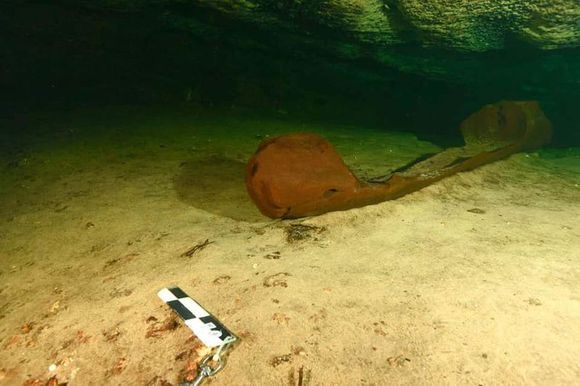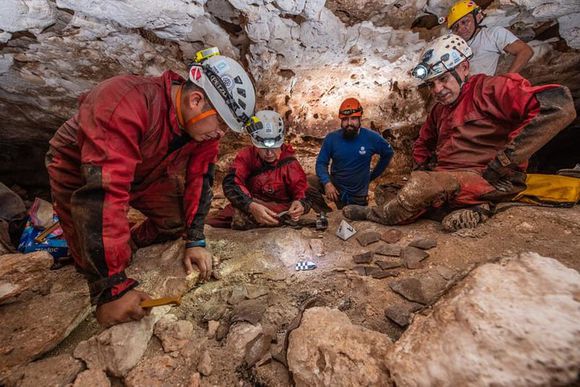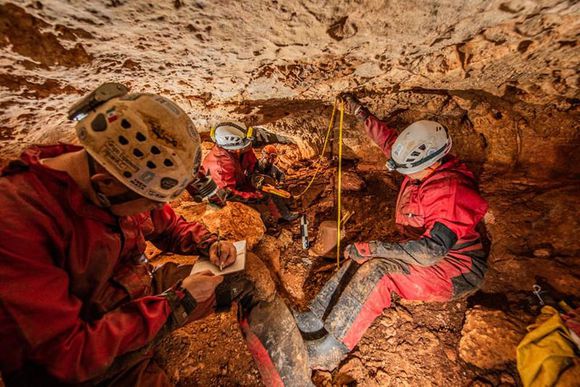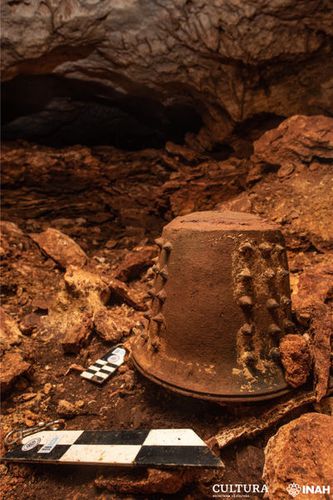It is the first canoe of this type to be found complete and preserved in the Maya area
MÉRIDA, Yucatán, (October 30, 2021).- Specialists from the National Institute of Anthropology and History ( INAH ) discovered a pre-Hispanic Maya canoe in a cenote in Izamal , Yucatán.
The canoe measures 1.60 meters long, 80 centimeters wide and 40 centimeters high, and due to its characteristics it would be associated with the Terminal Classic period (830-950 AD)
The discovery was made during the archaeological salvage work carried out due to the construction of the Maya Train, specifically in Section IV of the work, which goes from Izamal to Cancun, Quintana Roo.

In this section the rescue work is in charge of the archaeologist Manuel Pérez Rivas and José Francisco Osorio León. There the site called San Andrés was located, where there is a cenote, a well and a rejoyada.
When exploring the cenote, a cave mark was found and “inside a hardwood trunk was initially observed, which after inspection indicated the presence of symmetrical cuts made to create a roof without edges, which made it clear that it was of a platform type canoe.

Measuring 1.60 meters in length (length), 80 centimeters in width (width) and 40 centimeters in depth (height), the small boat could have been used for the extraction of water from the cenote or for the deposit of offerings during rituals “, said the INAH in a statement.
Helena Barba Meinecke, head of the Yucatan Peninsula Office of the Sub-Directorate of Underwater Archeology (SAS), indicated that “the relevance lies in the fact that it is the first canoe of this type that is complete and so well preserved in the Maya area, having also fragments of these boats and oars in Quintana Roo, Guatemala and Belize “.
Initially, the specialist indicated, the object is associated with the Terminal Classic period (830-950 AD).
INAH will calculate its antiquity
However, it will be next November when a new canoe survey will be carried out, “in order to determine its age by means of dendrochronology, an analysis that will add the support of the Sorbonne University in Paris, as well as to know exactly which wood tree it is from”.

Also, “a borehole will be carried out in the sediment that is under the canoe, in order to define the stratigraphy of the environment and possible additional elements; as well as photogrammetry studies to obtain a 3D model of the canoe, to help in its virtual study and dissemination and that facilitates the creation of replicas that can be integrated into museums in the region “.
However, the canoe has not been the only find in San Andrés, since in the well-cenote, 50 meters deep, a human skeleton and ceramic were identified, as well as mural painting in its access area.
Other Findings
On the walls of the rejoyada, through intricate passages, the SAS researchers found mural painting –in the manner of painted hands on the rock ceiling–, a complete Cumtun Composite censer, corresponding to the Late Postclassic period (1200-1500 AD), and a rock-stele

Also, a ritual knife and more than 40 ‘killed’ vessels (which were deliberately broken when placed in the place) with associated charcoal.
“All the ceramic and bone elements discovered so far have been registered and were transferred to the archaeological camp of the Archaeological Zone of Chichén Itzá, for their protection”, detailed the INAH.
He added that the archaeological site of San Andrés has been under the protection of the INAH both in its land and underwater, since the researchers also noticed evidence of looting in the cenote.
Source: Sipse
TYT Newsroom


